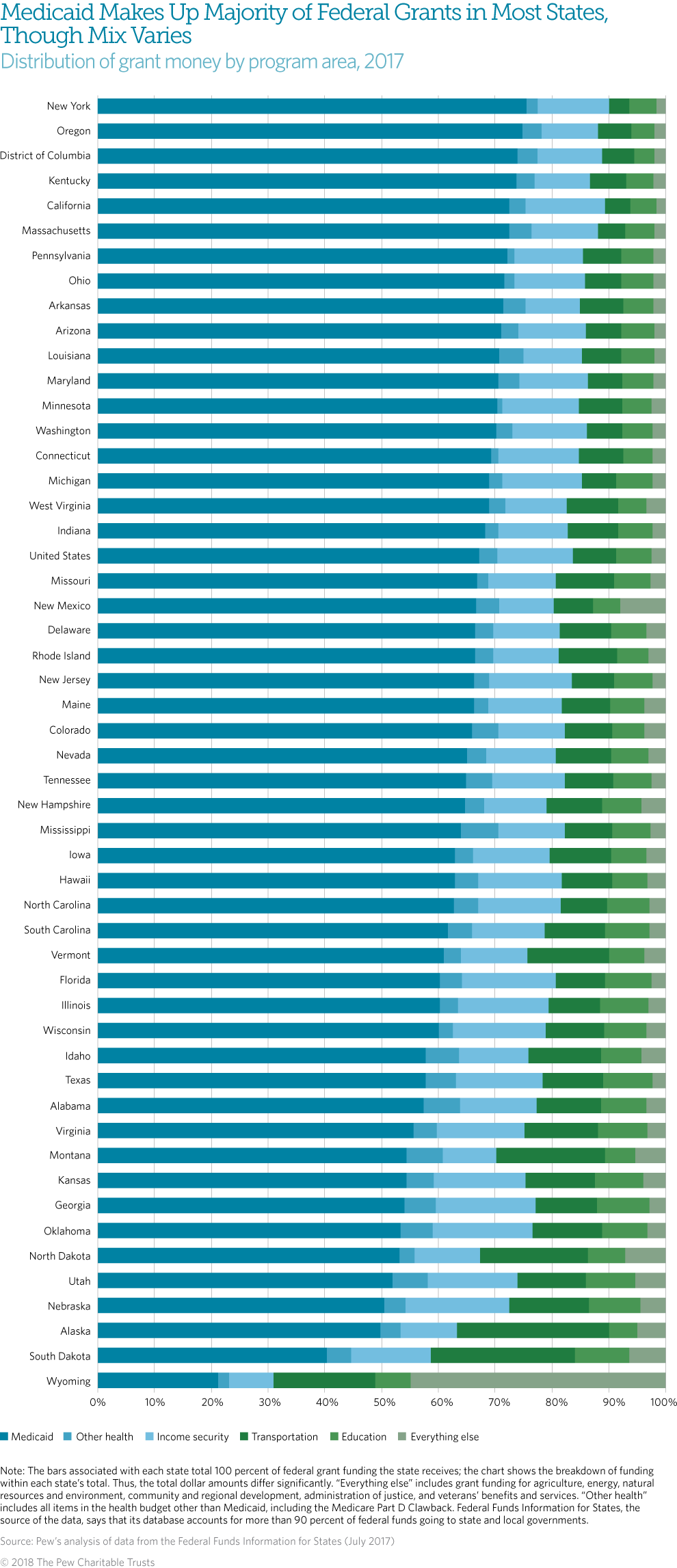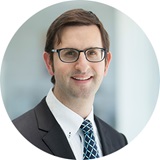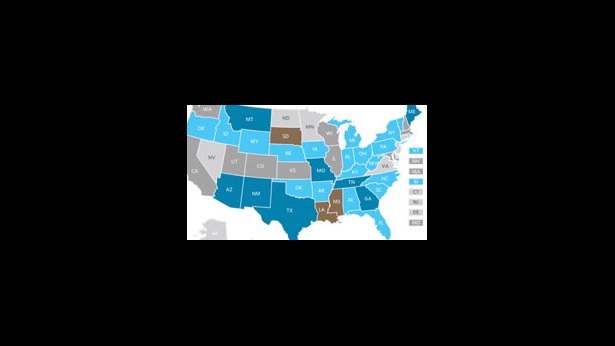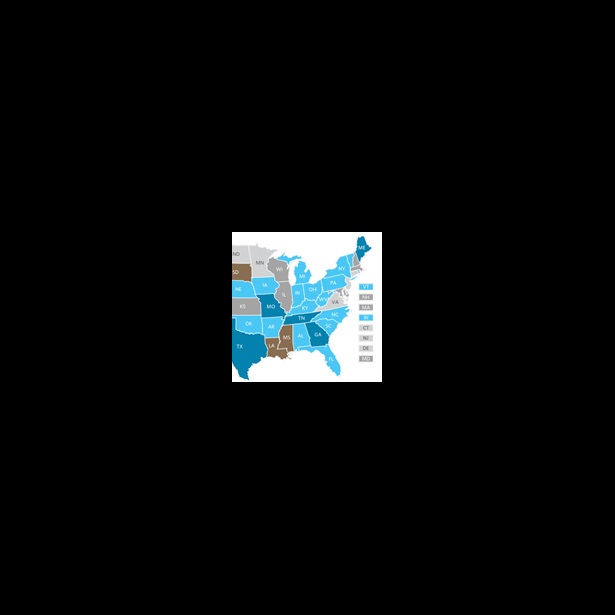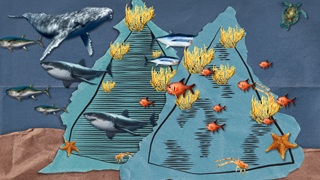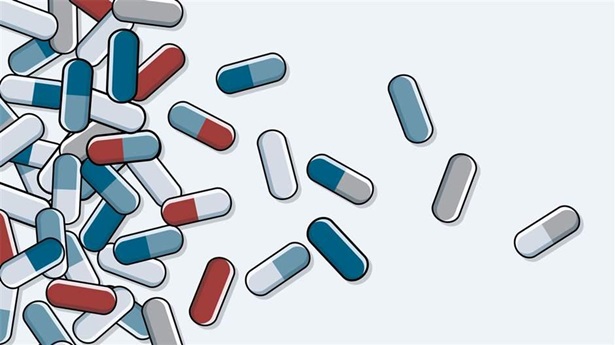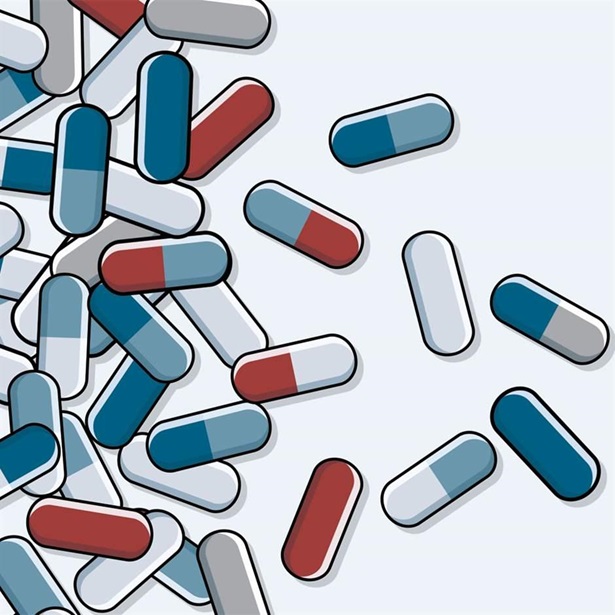Medicaid Makes up Largest Share of Grants to States
Mix of total funding from federal grants varied by state
This data was updated in March 2019. Please see "Medicaid Makes Up Most Federal Grants to States."
About two-thirds of federal grant dollars to the states—67 percent—were for Medicaid in 2017, by far the largest category of grants. While funding for this health care program for low-income families and individuals topped the list in all but one state, the mix of funding among the other grant categories varied from state to state.
Medicaid accounted for 75.5 percent of federal grants to New York, but only 21.2 percent of grants to Wyoming, the only state where Medicaid was not the largest category of grants received. In 21 states and the District of Columbia, Medicaid funding represented two-thirds or more of total grant money from the federal government. For Wyoming, the largest category of federal grants included money from leasing rights to minerals extracted on public lands. (For more information on federal grants and state budgets, see “Funding From Federal Grants Varies as a Share of State Budgets.”)
Other grant categories typically had smaller shares than those for Medicaid, but specifics varied
While Medicaid generally makes up the largest share of grants to states, other categories make up smaller but still substantial portions of federal funding to states. (See “Two-Thirds of Federal Grants to States Are for Medicaid.”) After Medicaid, the next-largest funding category in 2017 was for income security programs (13 percent of the total allocated to states), followed by transportation programs (8 percent) and education (6 percent).
Income security grants
Among the income security programs are temporary cash assistance, employment services, and school-provided meals, for example. The percentage of grants to states for income security programs ranged from 18.4 percent in Nebraska to 7.8 percent in Wyoming.
Transportation grants
Grants to states for transportation programs showed similar variation. Transportation grant money funds programs such as surface transportation block grants, Federal Aviation Administration airport improvements, and Federal Highway Administration programs. The share of transportation grants was highest in Alaska at 26.8 percent, while New York’s was the lowest at 3.5 percent.
Education grants
States experienced less variation in what percentage of their total grant funding went to education programs. Federal funding to states supports education programs such as Title I local education funding, special education, and career and technical education. Education grants accounted for 9.5 percent of the total grant funding received by South Dakota, but only 3.7 percent of the total for the District of Columbia in 2017.
